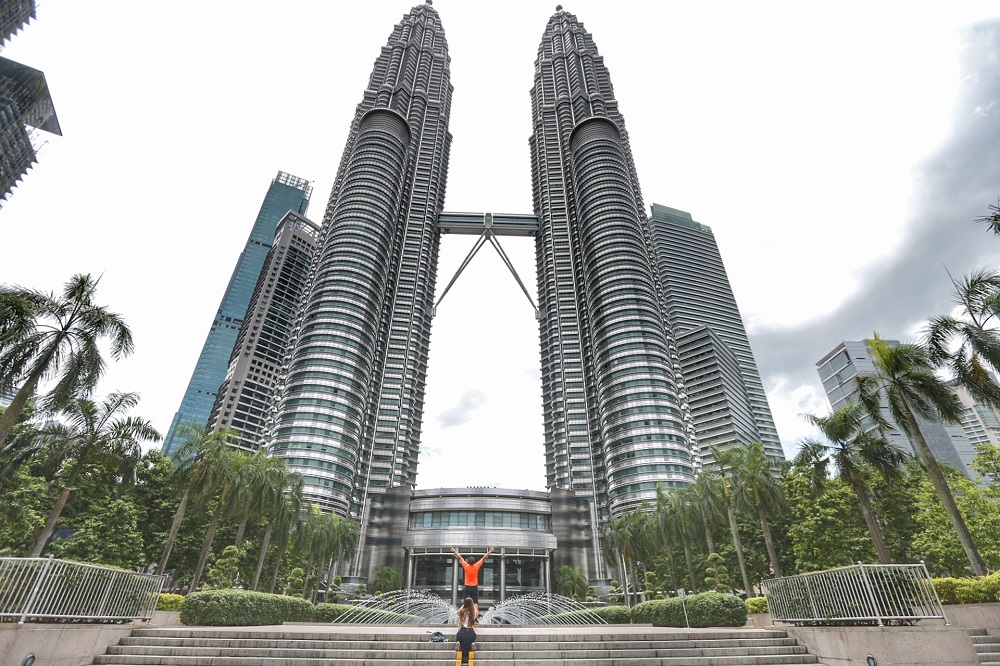KUALA LUMPUR, June 17 — The effects of Malaysia’s stimulus package should be seen in the third quarter of 2020’s (Q3 2020) gross domestic product (GDP) performance, said AmBank Research group chief economist and head of research Dr Anthony Dass.
He said the modest improvement expected in Q3 2020 would come after the anticipated worst quarterly growth in the second quarter of this year.
“While we expect growth to be around negative 1.1 per cent to negative 2.0 per cent as the base case for this year, the downside is around negative 5.0 per cent,” he told Bernama.
Malaysia unveiled a RM295 billion stimulus package, namely the RM260 billion Prihatin Rakyat Economic Stimulus Package (Prihatin) and RM35 billion National Economic Recovery Plan (Penjana) — to boost economic activities and recover from the downturn.
The new wave of Covid-19-centric stimulus has flooded the markets and companies with cheap credit at an unprecedented pace, he said.
On the fiscal front, Dass said even if the fiscal deficit is at six per cent of GDP, it is still below the fiscal deficit of 6.9 per cent in 2009 during the global financial crisis.
“Hence, the economy still has room to expand its fiscal deficit if the need arises,” he said.
Dass, who is also a Secretariat of the Economic Action Council, said the government could raise the self-imposed debt ceiling of 55 per cent if needed.
“The increase in fiscal deficit should, in principle, not impact our credit given that the (other countries in the) world, including Malaysia, are experiencing an unprecedented time,” he said.
He said the important thing is to have the fiscal discipline to lower the deficit once the economy is out of the woods.
On the monetary side, he said the probability of a rate cut in July by 25 to 50 basis points from the current two per cent is now at 40 per cent from the initial 60 to 80 per cent.
“With the short-term recovery measures, plus some statistics unveiled in May such as the manufacturing Purchasing Managers Index (PMI) which showed signs of improvement although still in the contraction region, further relaxation of the movement control order (MCO) (now in the stage of recovery CMO), strengthening of the ringgit, and ample liquidity suggest there is little room for a rate cut in July,” he said.
On the short-term recovery measures, he said the automotive industry is likely to benefit from the sales tax exemption of 100 per cent for completely knocked down (CKD) cars and 50 per cent for completely built up (CBU) cars until the end of the year.
Likewise, the property sector is expected to benefit from the reintroduction of the Home Ownership Campaign, with stamp duty exemption, relaxation of the 70 per cent loan-to-value cap for a third home, and the exemption of the real property gains tax.
Dass said for small and medium enterprises (SMEs), there is a further relief of an additional RM2 billion through the Penjana SME Financing scheme at a low financing rate of 3.5 per cent per annum, available from mid-June 2020 with a limit of up to RM500,000 per SME.
He said the SMEs in the tourism sector should benefit as well and it would provide positive multiplier effects on tourism-related businesses, and the downside risk for micro-businesses and Bumiputera entrepreneurs would likely be contained.
“Other areas that are expected to provide positive impetus to the economy are the gig economy, reliefs for investment relocating to Malaysia, and digitalisation,” he said.
He said this is on top of the various measures to protect and create jobs such as the wage subsidy programme extension and hiring incentives, subsidies and allowances such as childcare eVouchers, e-Wallet credits, free daily Internet, and unlimited public transport travel passes that should help to support consumer confidence and spending.
“With the global lockdown easing, global trade is envisaged to improve. As a trading nation, Malaysia will potentially benefit from improving global trade,” he added.
He said positive areas of contribution are expected from global semiconductor sales, oil and gas from a more stable crude price and palm oil with renewed buying interest from India.
Dass said the governments and central banks around the world are shifting to recovery mode from rescue mode as the deepest slump since the Great Depression is showing signs of bottoming out.
“After rolling out trillions of dollars’ worth of measures to prevent their economies and markets from collapsing, they are now doubling down and even spending more to backstop a recovery as coronavirus lockdowns ease...and Malaysia is no exception,” he said.
He said the economy is now in recovery phase, the fourth phase of the 6R strategy to improve the economy.
“We have moved from triage to recovery, and have realised that more fiscal support will be needed for households and small businesses to prevent this liquidity crisis from turning into a solvency crisis,” he added. — Bernama



















